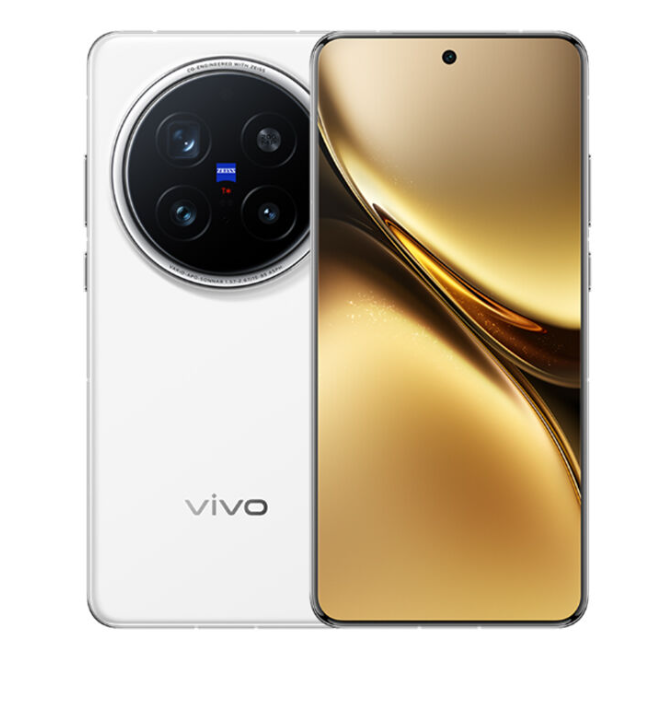The Xiaomi 15 Ultra vs. Vivo X200 Pro isn’t just a fight over specs but it is a clash of distinct design philosophies. Xiaomi pushes boundaries with cutting-edge camera tech and premium materials, while Vivo aims for sheer practicality with an ultra-bright display and rugged durability.
Both promise top-tier performance, but which one truly delivers the best mix of power, innovation, and everyday usability? Whether you’re after photography excellence, all-day battery life, or the ultimate display, this comparison will reveal which device is best suited for your needs.
1. Design and Display

The Xiaomi 15 Ultra and Vivo X200 Pro both offer premium designs with glass and metal builds, but Xiaomi stands out with its aerospace-grade glass fiber back, making it more durable. Both phones have IP68 water resistance, but the Vivo X200 Pro goes a step further with an IP69 rating, offering better protection against high-pressure water jets. In terms of displays, the Xiaomi 15 Ultra has a 6.73-inch LTPO AMOLED panel with a 3200-nit peak brightness, while the Vivo X200 Pro features a slightly larger 6.78-inch display with an even higher 4500-nit peak brightness. However, Xiaomi has a sharper 1440p resolution, whereas Vivo settles for 1260p.
While Vivo’s higher brightness is a plus for outdoor visibility, Xiaomi’s sharper resolution makes it a better display overall.
2. Specifications

Xiaomi is powered by the Snapdragon 8 Elite, whereas the Vivo X200 Pro runs on the MediaTek Dimensity 9400. Both are high-end chips, but Qualcomm has historically had better GPU optimization, making Xiaomi the better choice for gaming. The Vivo X200 Pro has a 6000mAh battery (except in some regions where it’s 5200mAh), while Xiaomi offers 6000mAh in China and 5410mAh globally. Both charge at 90W wired, but Xiaomi’s 80W wireless charging is much faster than Vivo’s 30W.
The Xiaomi 15 Ultra wins in terms of battery flexibility, as its faster wireless charging and Qualcomm chipset make for a better overall experience.
3. Camera

Xiaomi and Vivo both focus on high-end camera setups, but Xiaomi has an edge in versatility. Xiaomi offers a quad-camera system with a massive 1-inch 50MP sensor and two telephoto lenses, including a 200MP periscope with 4.3x optical zoom. Meanwhile, Vivo offers a 50MP main sensor and a 200MP periscope lens but only reaches 3.7x optical zoom. Xiaomi’s Leica-tuned lenses and superior zoom capabilities make it a more capable phone for photography, particularly in telephoto and wide-angle shots.
Both devices can record 8K video, but Xiaomi offers more frame rate options, and Dolby Vision HDR recording can be done at 4K60fps. Xiaomi’s camera system is the more well-rounded choice.
4. Pricing
Xiaomi 15 Ultra starts at $1,099, while the Vivo X200 Pro is priced at $749, making Vivo the more affordable option. Xiaomi justifies its higher price with a sharper display, superior camera hardware, and faster wireless charging. Meanwhile, Vivo offers great value with a bright display, solid performance, and a competitive camera system. If budget is a priority, the Vivo X200 Pro delivers flagship features at a lower price.
However, if you’re looking for the best hardware and camera experience, the Xiaomi 15 Ultra is worth the extra cost.
5. Conclusion

Both phones bring flagship-level performance, but Xiaomi 15 Ultra is the better choice for power users, photographers, and those who want the best overall package. It has a sharper display, superior cameras, and faster wireless charging. However, the Vivo X200 Pro stands out for its affordability, extreme brightness, and rugged build, making it an excellent choice for those who want a high-end experience without the premium price tag.
If you want the absolute best, then go for Xiaomi. If you prefer great value for money, Vivo is the smarter pick.
Read More:
- Xiaomi 15 Ultra Launches in India with Quad Leica Cameras, Snapdragon 8 Elite, & More for Rs 109,999
- Xiaomi 15 Ultra vs Galaxy S25 Ultra: Battle of the Ultra Phones
- Vivo X200 Pro vs Oppo Find X8 Pro: Comparing the Chinese Flagship Phones in India







